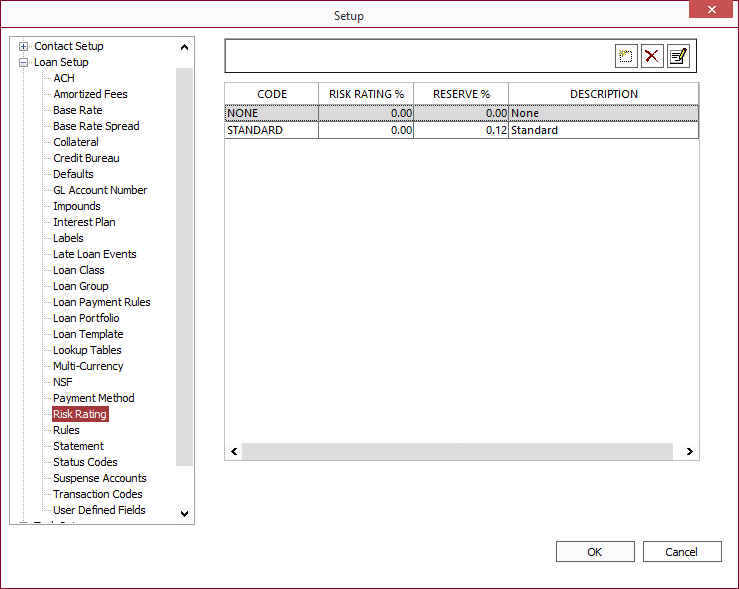Risk Rating
Risk Rating is a parameter which may be placed on a loan for the purpose of estimating the, “After expected loss,” value of your portfolio. Risk Rating codes are configured on the Risk Rating sub-category under Loan Setup.

To add a new risk rating, click Add  , enter a Code, risk rating percentage or reserve percentage, and a description if required. Click OK.
, enter a Code, risk rating percentage or reserve percentage, and a description if required. Click OK.
There is no requirement that your Risk Rating percentage and your Reserve percentage add up to 100%, as they are used in totally separate reports. It is quite likely that you will decide to use one or the other, but not both.
The Risk Rating percentage represents the value of the loans with this risk rating, and is used on the risk report to estimate the “after risk” value of your portfolio.
Example
If 1 out of every 20 loans of a particular risk rating were to be assumed to go bad, then that risk rating should be set to 95%.The Reserve Percentage represents the amount of money held in reserve on your general ledger for expected loan losses, and is used on the Loan Loss Reserve Report. Essentially, the loan-loss reserve represents the assumption of loan loss expense in advance, rather than waiting for the loans to actually default. The Reserve percentage is set by the management of the lending institution, although for certain types of lending institutions, a minimum loan-loss reserve percentage may be required by the charter or by regulators.
When the risk rating is entered or modified on a loan, the user has the ability to set an effective date for the modification. Any date dependent reports that are configured to select by, sort by, or display risk rating will use the risk rating that was in effect as of the trial date for which the report is being run.

